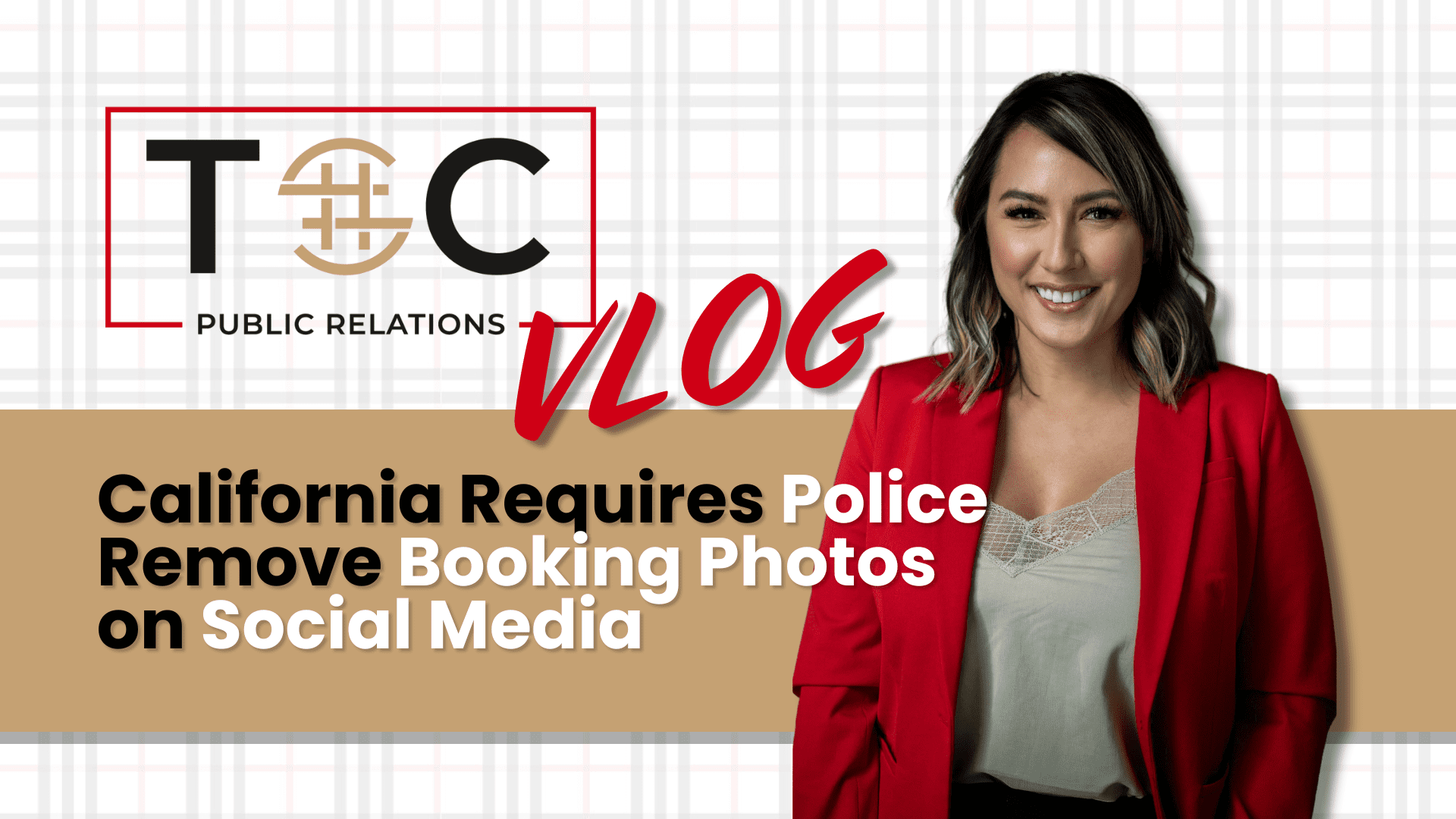The dissemination of booking photos on social media has been a hotly debated topic in recent years. While some argue that the practice aids in maintaining public safety and transparency, others raise concerns over privacy and unwarranted reputational damage.
In September of 2023, Governor Newsom signed Assembly Bill 994 (AB994) into law, which went into effect on January 1, 2024. AB994 specifically addresses the issue of how and when booking photos may be shared or posted on social media accounts managed by law enforcement agencies.
On February 14, 2022, I wrote an article, “California Law Regulates Police Social Media Posts,” when the first version of this law came out. Read that article to see the changes in the law.
California Penal Code Section 13665
The specifications of this assembly bill have been added to the California Penal Code in section 13665, which specifies:
(a) A police department or sheriff’s office shall not share, on social media, booking photos of an individual arrested on suspicion of committing a nonviolent crime unless any of the following circumstances exist:
(1) A police department or sheriff’s office has determined that the suspect is a fugitive or an imminent threat to an individual or to public safety, and releasing or disseminating the suspect’s image will assist in locating or apprehending the suspect or reducing or eliminating the threat.
(2) A judge orders the release or dissemination of the suspect’s image based on a finding that the release or dissemination is in furtherance of a legitimate law enforcement interest.
(3) There is an exigent circumstance that necessitates the dissemination of the suspect’s image in furtherance of an urgent and legitimate law enforcement interest.
(b) With respect to an individual who has been arrested for any crime, including crimes defined in subdivision (c) of Section 667.5, a police department or sheriff’s office that shares, on social media, an individual’s booking photo shall do both of the following:
(1) Use the name and pronouns given by the individual. A police department or sheriff’s office may include other legal names or known aliases of an individual if using the names or aliases will assist in locating or apprehending the individual or reducing or eliminating an imminent threat to an individual or to public safety or an exigent circumstance exists that necessitates the use of other legal names or known aliases of an individual due to an urgent and legitimate law enforcement interest.
(2) Remove the booking photo from its social media page within 14 days unless any of the circumstances described in paragraphs (1) to (3), inclusive, of subdivision (a) exist.
(c) Subdivision (b) shall apply retroactively to any booking photo shared on social media.
(d) For purposes of this section, the following terms have the following meanings:
(1) “Nonviolent crime” means a crime not identified in subdivision (c) of Section 667.5.
(2) “Social media” has the same meaning as in Section 632.01, except that social media does not include an internet website or an electronic data system developed and administered by the police department or sheriff’s office.
This comprehensive blog post will delve into the implications of PC 13665, exploring its background and steps law enforcement can take to ensure they comply with the law while still protecting the community.
What Are Booking Photos?
Booking photos, sometimes also referred to as police mugshots, are photographs taken when an individual is completing the intake or booking process in a custodial setting.
Although it varies from one agency to another, law enforcement posts arrestees on their social media accounts. These photos are often posted to attract the attention of other people who may have been the victim of a crime committed by the arrestee. They may also post these photos in an event to protect the community from future crimes the arrestee has the potential to commit.
With the rise of social media, these images are now easily shared and can remain online indefinitely, raising privacy issues and potential stigmatization.
The Purpose of AB 994
AB 994 targets the balance between privacy rights and public interest, recognizing the long-term consequences that such images can have on an individual’s life, even if they are later exonerated.
Advocates for the law believe the purpose of the law helps with:
– Protection of privacy rights: AB 994 acknowledges the permanence of digital information and aims to protect the civil liberties of individuals who may have been mistakenly arrested or whose charges have been dropped.
– Reducing negative impacts: The bill seeks to minimize harm, such as difficulties securing employment or housing, caused by the public accessibility of booking photos.
– Limiting discrimination: It also addresses concerns that widespread access to mugshots may encourage bias and prejudice.
Opponents of the bill believe it affects how law enforcement proactively tries to keep the public safe. They fear the bill may hinder crime prevention efforts as well.
Recommended Procedures For Law Enforcement Social Media Managers
Until a scheduling type feature that allows the unpublishing or removal of booking photos comes about, compliance with Penal Code Section 13665 must be done manually. You should do the following to make sure you comply with the law:
1. Go through each of your agency’s social media accounts and unpublish booking photos (unless the exemptions mentioned above exist).
2. If you’re going to delete a photo, rather than simply unpublishing it, make sure you note the deletion and why. This will prove beneficial should public records requests be made for your social media accounts.
3. For all future images, set a calendar or reminder item for 14 days after posting an image to remind you to unpublish/delete the image.
4. Update your department policy manual to reflect adherence to the law, and update your social media team’s procedures with approved steps regarding these types of images.
A Better, Longer-Term Solution
The penal code section specifically identifies a police department’s website is not considered social media, which the law targets. So you and your agency may want to consider the following options for the posting of photos of criminals:
1. Establish solid guidelines outlining the criteria for a criminal’s photo getting published on social media.
2. Do you have a photo of the individual which is not a booking photo? A driver’s license photo? A photo of the individual before being arrested? Screenshots from a surveillance video? Maybe the video itself? Perhaps you could use this instead of a “booking photo?”
3. Consider creating a news release or blog article with the criminal’s image on your department’s website. Then, share the link to the article on your social media platforms. Just make sure the article’s preview image attached to the link does not contain the image of the criminal.
What About Reposting?
To think that we have always favored posting fresh, new content, yet will ask you to ponder the idea of reposting the criminal’s photo, is something we never thought we would see!
While we’re not legal experts, we’ve read the law, and it was pretty clear what type of images (“booking photos”), the kind of subject (“arrested”), the time frame (“within 14 days”), and the platform (“social media”) that is mentioned in the wording. The law did not mention non-booking photos, photos of subjects who had not been arrested, the reposting of photos after the original 14 days had lapsed, or where the posts occur other than social media, like websites.
Conclusion
We all know it’s a matter of time before some lawmaker sees the cops have found a way to protect the community still and identify bad guys by working around the specifications of PC 13665. And we wouldn’t be shocked if some attorneys screamed that some of the recommendations we suggest in this article are either unethical or not legal.
This law represents a significant shift for California’s law enforcement agencies. It reflects a growing recognition of the long-term consequences of criminal record publicity and protecting individuals’ rights in the digital era. The old cop in me is yelling, “We’ll if you don’t want your image on social media, then don’t do the crime.”
As the use of technology increases in law enforcement, so will the increase in laws around how, when, and why police and sheriff’s departments use it. Unfortunately, it seems more laws are created in California when politicians realize the cops have found a way to outsmart criminals or get the upper hand on winning the war on crime. But that’s a discussion for another day.
Disclaimer: None of the content in this article should be construed as legal advice. You should discuss this law, policies, and procedures with your department or city’s legal counsel.


